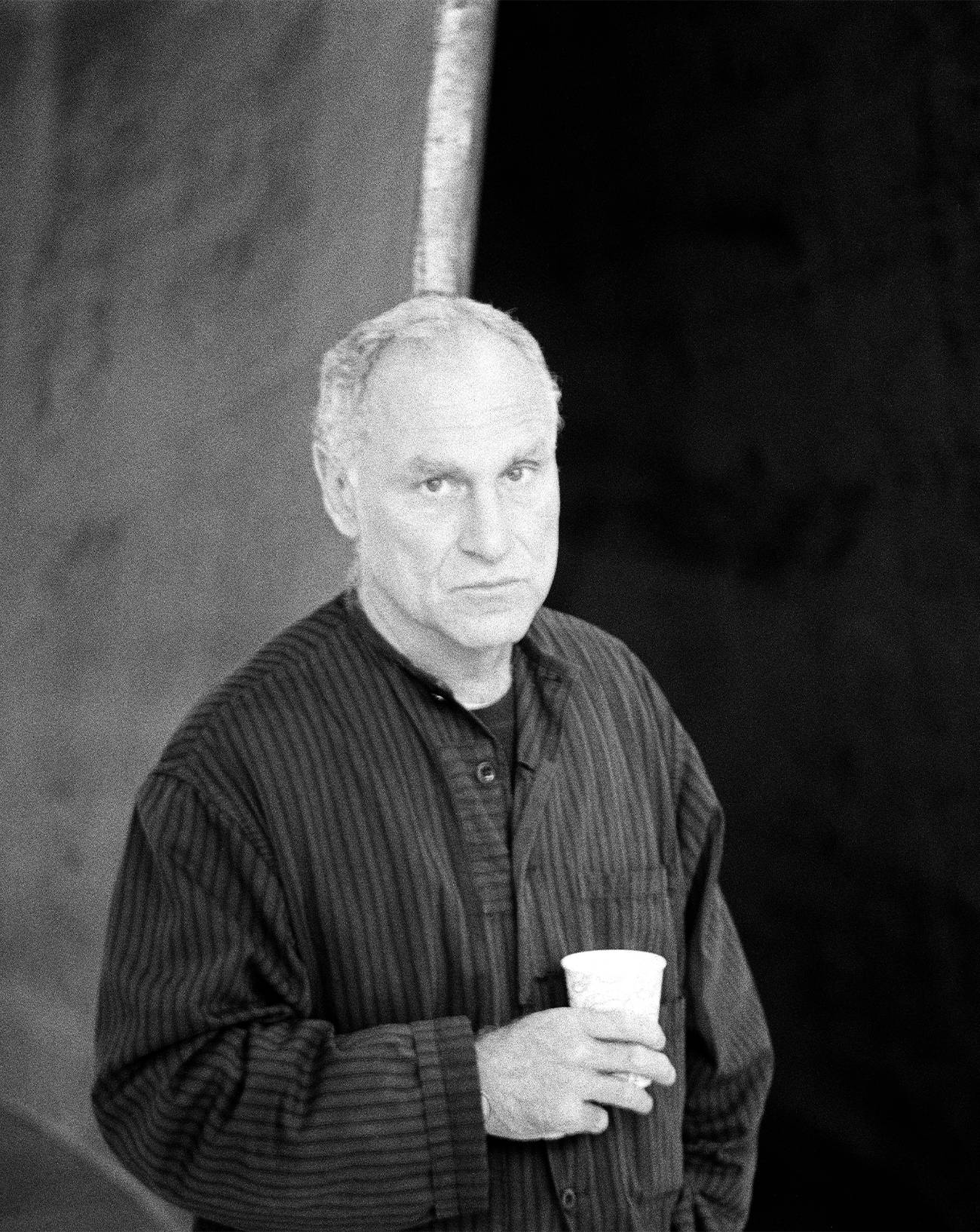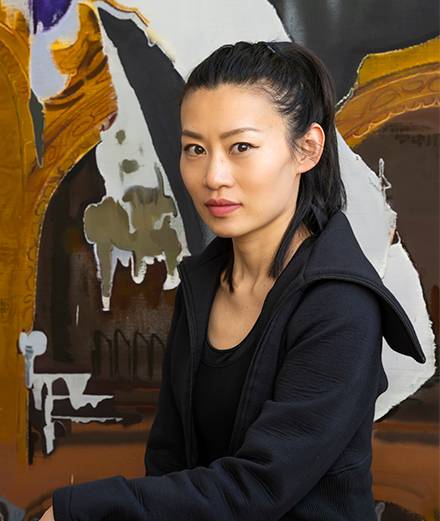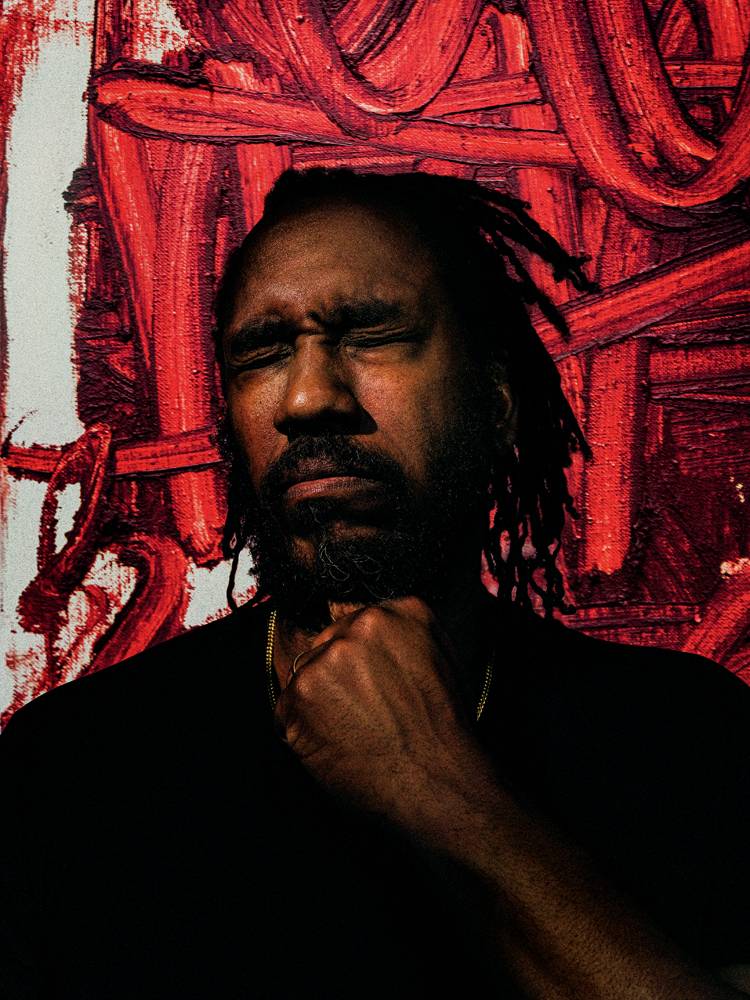

Artists have long adored Paris, a city whose museums and heritage have been a constant source of inspiration for every generation of painters. Young Chinese artist Xinyi Cheng came to live here for precisely these reasons, even if she doesn’t necessarily feel comfortable with the art of painting which she practises every day. Her pictures are the echo of encounters she makes in the French capital, mostly young men, in daily and sometimes banal situations, but often loaded with sensuality. Her portraits, with their soft lighting and deceptively simple contours, won her this year’s Baloise Art Prize (30,000 Swiss francs awarded to the laureate by Bâloise Assurances) for her solo show at Balice Hertling during the last Art Basel. Moreover Bâloise Assurances, which has acquired several of her pieces, will be donating them to the Neue Nationalgalerie in Berlin and the MUDAM (Musée d’Art moderne Grand-Duc Jean) in Luxembourg. Numéro caught up with Cheng in her Belleville studio.
Numéro : What’s your background?
Xinyi Cheng : I was born in Wuhan and grew up in Beijing. I went to art school there and studied sculpture. These years were really formative for me, because I had to do a lot of figurative clay sculptures, a practice which still helps me today in my approach to painting bodies. But the real breakthrough happened when I moved to Baltimore and found my language and subject for painting.
Do you remember your first encounter with art? What do you think it was that made you want to be an artist?
I don’t really remember it being a decision; I started painting when I was a kid, and the whole suite of events that followed felt logical and natural to me. I don’t really remember having an epiphany or an encounter with art, but I do have a clear childhood memory of a catalogue from a Van Gogh exhibition I really liked. The catalogue really made me want to play with the paint – I actually still feel the same impulse when looking at a work of art I really like in a museum.
What were you looking at then and what are you looking at today?
I was a big fan of Impressionism till I was 18 – now I’ve kind of grown out of it. Since I live in Paris, I just look at everything in the museums, and not only paintings. I also feel I’ve been quite marked by reading Francis Bacon: The Logic of Sensation by Gilles Deleuze.
“I paint people I know because I like their faces or how they talk and how their gestures tell stories”
Do you feel connected to a community or movement?
I love hanging out with my artist friends. But a lot of what I do happens in the studio, which is for me a very personal space.
You seem very comfortable in paint, but sometimes you use other media, like photography. And what about your palette?
I wouldn’t say I’m really comfortable with painting – I just love the paint, I think it is a very sensitive and powerful medium. It takes a lot of planning but also a lot of accidents. I started taking a lot of photos when I started to paint a lot. At the beginning the photos were just references for my paintings, but then I think they became something on their own and I wanted to explore that. There are photos that I kept going back to and looking at, and I did not want to paint them, and then I realized they are photos in their own right. Where colour is concerned, I want it to be pleasing and slightly disturbing at the same time – so that it triggers a specific moment with feelings.
What are the sources for your paintings? Do you know the people you paint? And why only men?
I paint people I know because I like their faces or how they talk and how their gestures tell stories. There are women in my recent paintings.
Do you work with archival images and found footage in your practice? Is the question of appropriation a valid subject for you?
I paint mostly from photos that I took myself – I then put the parts together. There are also a few references to classic paintings in my work.
How do you install your work? Is the manner of display in your exhibitions important as a vehicle for your message and, if so, how is it articulated in the installations?
For me, most of the work happens in the studio, where I really focus on each painting. Installation is something I leave to curators and specialists – I just usually check the light at the end.


You were just awarded the Baloise Art Prize at Art Basel. What was your winning project?
I showed 12 paintings I made in the last 12 months, depicting people I met this year or previous encounters that still resonate with me.
Why did you choose to live in Paris? How do you perceive the art scene here?
I love Paris, it is a very metropolitan city, yet leaves you a lot of space and time, which is great for my way of working. I also love going to the museums here, I’m essentially charmed by the city. Paris has a very interesting art scene, but that can also be said of many other types of scene here, thankfully!
What’s your daily routine in Paris?
I get up late, I go to my studio around noon, and then I work till 9.00 or 10.00 pm, or later if I can’t figure something out.
Is there anything you would like to make people conscious of through your art?
I don’t really feel I’ve got enough distance from my art to reply consciously to this question – but I know for sure I want people to be emotionally overwhelmed and sometimes confused by their feelings and encounters.
What’s you next project?
I have a solo exhibition coming up at the Hamburger Bahnhof in Berlin next year.








